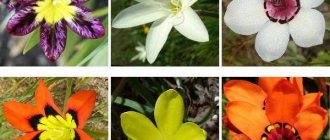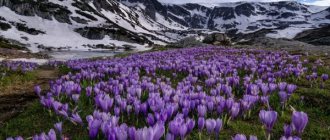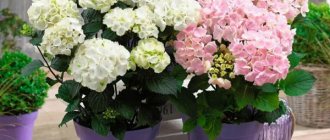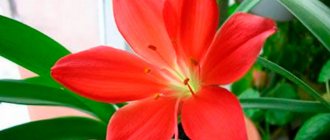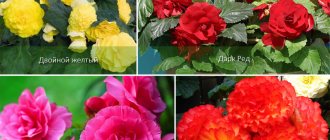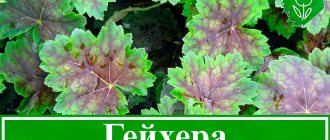Hyacinths are one of the most beautiful primroses, favorites of domestic summer residents. Together with many other “spring” bulbous flowers, these flowers are the first to delight the soul with an extraordinary variety of colors and delicate aroma. Today we will talk about how to plant hyacinths correctly, as well as select varieties for a coherent and harmonious design of the site.
Spring hyacinths look especially attractive thanks to their lush greenery and bright flowers.
Brief description of cultivation
You need to plant bulbs in early or mid-autumn. They are removed from the soil after the foliage turns yellow. As a rule, this falls in June-July. These parts of the plant should be kept in a place that is well ventilated and has moderate humidity. For storage, paper bags or boxes are used, inside which the bulbs are laid out in 2 layers. During the first two months, it is recommended to maintain the temperature at 25°C. After this period, it is better to transfer the planting material to a room where the temperature reaches 17°C.
For good development, hyacinth needs a lot of bright sunlight. The soil must have good throughput, a large amount of humus, nutrients and an acidity below 6.5.
When a dry period begins, it is necessary to water the plant so that the top layer of soil (15-20 centimeters) is well saturated with water. Over the entire season, hyacinth needs 2-3 feedings. The first time it is performed at the beginning of the growing season using phosphorus-nitrogen fertilizers. The second is when the buds form, and the third is during flowering. For the latter, fertilizer is used with fertilizing that contains phosphorus and potassium. The flower is propagated by children and seeds.
When growing hyacinth, you may encounter an invasion of aphids, flower flies, stem and root-knot nematodes, thrips, onion root mites and mole crickets. In addition to these problems, a flower can become ill with fusarium, variegation, rhizoctonia, penicillium rot, as well as yellow or soft bacterial rot.
It is worth considering that any part of hyacinth contains a poisonous alkaloid.
Botanical description
Hyacinth (lat. Hyacínthus) is a perennial herbaceous plant with a short growing season. In open ground, the flower actively develops and blooms in the spring, but in summer, autumn and winter its development stops.
- The bulb is round and large, has thin scales.
- The leaves are elongated. During the flowering period, the size of the leaves is relatively small, but after the peduncle dies, they grow up to 20 cm.
- The flowers are bell-shaped with curved petals. One inflorescence can contain up to 35 buds. In the wild, the flower is white or blue.
- Varietal plants are white, pink, violet, yellow, purple, orange and even almost black.
Read about varieties suitable for indoor growing here.
Features of hyacinth
The birthplace of the flower is considered to be the Middle East, North Africa, and the Mediterranean. But to make the plant population larger, Holland did a lot. For this reason, this country was given the name “hyacinth center”. The city of the Netherlands produced the most species. And the city of Haarlem sent many bulbs to different parts of the globe every year.
The 30 centimeter stem of the plant continues to the bottom. When the bush fades, the stem and foliage begin to dry out. But the upper leaf plate forms a bud in its corner. Then it will transform into a bulb, and next year it will bloom. Other plates can also form bulbs, but they will be weaker. Gardeners use these parts of the plant to grow new shrubs.
Inflorescences consist of double or simple buds. They can be purple, red, white, pink, yellow, blue and other colors. The shape of the brushes resembles a cone or cylinder, and the perianth resembles a bell-shaped funnel. The hyacinth fruit consists of three nests, each of which contains a pair of seeds with an air shell.
Hyacinth flower - description
The perennial hyacinth has a dense bulb, consisting of lower, fleshy leaves that occupy the entire circumference of the bottom, the direct continuation of which is the peduncle. A racemose inflorescence of brightly colored bell-shaped flowers with bent perianth lobes is formed on the stem. After flowering is completed, the stem and the green leaves sitting at the very bottom dry out, but a bud forms in the corner of the upper leaf, which will become a bulb and produce a peduncle next season. Bulbs can also form in the corners of other hyacinth leaves, which can be separated and grown so that after a few years they also throw out flower shoots. The hyacinth fruit has the appearance of a leathery three-lobed capsule, in each nest of which two seeds ripen.
Features of cultivation
To grow hyacinth as a healthy, beautiful plant, you need to follow some rules, because it is capricious and requires a lot of attention. Here are the main conditions that are recommended to be met:
- Suitable soil is considered to be one whose acidity level is neutral. It should contain 1 part turf soil, as well as 1 part leaf soil. If there is only acidic soil, it is recommended to add lime, and if it is clayey, then sand.
- Although the flower feels best in a well-lit place, excessive light should not be allowed. Because of this, the hyacinth may become damaged.
- Liquid stagnation should not be allowed. For this purpose, gardeners recommend providing the plant with a good drainage system.
- This flower does not tolerate fresh fertilizer of organic origin.
- Since it also needs protection from draft winds, a suitable place for its cultivation is considered to be an area near bushes and various trees.
When to plant hyacinths?
The optimal time for planting hyacinths is late September - early October. If you plant plants ahead of schedule, they will quickly begin to grow and die from frost. And if you are late with the planting time, the bulbs will not have time to take root before the soil freezes.
If you decide to plant hyacinth bulbs later (late October - mid-November), be sure to mulch the planting site with compost, spruce branches or fallen leaves.
For good flowering, the correct planting location . It is advisable to plant heat-loving hyacinths where there are no drafts but plenty of sun. In addition, it is better to protect hyacinths from soil that is too wet - the plants can rot.
Planting hyacinths in open ground
What time to plant. Let's look at how hyacinths are planted in the fall. This time of year is considered suitable for such a procedure. More specifically, it is at the end of September - beginning of October that gardeners begin to work. An earlier period can destroy young seedlings due to possible frosts. If, on the contrary, you plant it later, the flower will not be able to develop a good root system. This increases the risk of death.
In order for hyacinth development to proceed well, preliminary preparation of the land should be carried out. To do this, gardeners dig the soil 30-40 centimeters deep, adding rotted compost or 3-4 year old humus (10-15 kg), magnesium sulfate (15 g), superphosphate (70 g), magnesium sulfate (30 g) per 1m2. Further actions should be carried out based on the composition of the existing soil. If it is sandy, then fertilizers with potassium and magnesium are added 1.5 times more. Sometimes the soil is also diluted with sand or peat.
With the onset of spring and summer, hyacinths need fertilizing that contains nitrogen.
Planting in autumn. So, when the time has come for September-October, you can start planting the bulbs. It is better to use medium sizes, because such specimens are more resistant to bad weather. The planting material is first carefully inspected for injuries, soft or sore spots. If there are bulbs with such damage, then they are not suitable, they are removed. Healthy material is dipped in a fungicidal solution for half an hour. Planting depth depends on the size of the bulb. 5-centimeter ones need to be deepened by 15-18 centimeters, and smaller ones - higher. The distance between them should be approximately 15 centimeters.
For better development indicators, it is recommended to create a “sand jacket”. To make it, sprinkle a 3-5 centimeter layer of river sand at the bottom of the depressions. An onion is pressed into it, which is again covered with sand and then with earth. This little trick allows you to avoid stagnation of liquid, which means that the risk of rot on the planting material will be much less. If the soil is dry during the procedure, it needs to be watered after the work is completed.
Spring planting. Hyacinths are planted only in autumn.
Types and varieties of hyacinths
All garden forms and varieties originate from the oriental hyacinth and its two varieties: Roman hyacinth, or oriental white, and Provencal hyacinth. Varieties are distinguished by the size of the inflorescences, the length of the peduncle and the timing of flowering. In the last category, hyacinths are divided into early, mid-blooming and late . The difference between the beginning of flowering of early and medium, medium and late varieties of hyacinth is no more than two weeks. The most interesting garden plants include:
- Amethyst is a hyacinth up to 25 cm high with a dense, wide-cylindrical inflorescence up to 9 cm long, consisting of 18-20 soft purple flowers up to 4 cm in diameter. Flowering begins in late April or early May and lasts about a week;
- Arentina Arendsen - a variety up to 28 cm high with a cylindrical inflorescence of 20-22 white flowers up to 4 cm in diameter. Flowering begins in mid-April;
- Bismarck is a hyacinth up to 28 cm high with a large cylindrical inflorescence up to 13 cm long of 20-25 light purple flowers up to 4.5 cm in diameter. It blooms for about two weeks from mid-April;
- General de Wet is a plant up to 24 cm high with a medium-density inflorescence up to 11 cm long of 18-20 white-pink flowers up to 2 cm in diameter with strongly twisted perianth lobes. Flowering begins in mid-April;
- Grand Lilac is a hyacinth up to 35 cm high with inflorescences up to 11 cm long, consisting of 15-20 porcelain-blue flowers up to 4 cm in diameter with lighter ends of the perianth segments. Flowering begins at the end of April and lasts up to two weeks;
- Grand Maitre is a variety up to 28 cm high with a loose inflorescence up to 10 cm long of approximately 18 light blue-purple flowers with narrow and strongly curled perianth lobes. Blooms at the end of April;
- Grootwort is a hyacinth up to 30 cm high with a loose inflorescence 13 cm long of 5-15 double flowers of a dirty light lilac hue, which begin to open in April or early May;
- Indigo King is a plant up to 25 cm high with a loose inflorescence up to 10 cm high of 7-18 black-purple, inky flowers up to 3 cm in diameter. It blooms for about two weeks from the end of April;
- Yellow Hammer - a variety up to 30 cm high with a dense inflorescence up to 12 cm long of 20-25 light yellow flowers up to 3 cm in diameter, opening at the end of April;
- Lord Balfour is a hyacinth with a peduncle up to 24 cm long, bearing a loose inflorescence of 8-13 purple-violet flowers up to 4 cm in diameter with lighter ends. Flowering begins at the end of April and lasts up to three weeks;
- Madame Sophie is a hyacinth up to 25 cm tall with a loose inflorescence up to 15 cm long, consisting of 15 white double flowers up to 3.5 cm in diameter. Flowering begins at the end of April and lasts about two weeks;
- Prince Arthur is a variety up to 30 cm high with a medium-density inflorescence up to 14 cm long, consisting of 13-16 double flowers up to 3.5 cm in diameter. It blooms from late April for 15-18 days;
- Rosalia is a variety only 20 cm high with a narrow cylindrical inflorescence up to 8 cm long, consisting of 10-15 bright pink flowers up to 2 cm in diameter. It blooms from the beginning of April;
- Chestnut Flower is a hyacinth up to 25 cm high with a loose inflorescence up to 12 cm long of 12-15 light pink double flowers up to 4.5 cm in diameter with strongly curled perianth lobes. Blooms at the end of April;
- Edelweiss is a plant 20-25 cm high with a dense wide inflorescence up to 11 cm long, consisting of 13-20 white flowers up to 3.5 cm in diameter. Flowering begins in mid-April;
- Edison is a hyacinth up to 22 cm high. The loose inflorescence consists of 7-10 double pink flowers up to 3.5 cm in diameter. Flowering begins at the end of April.
3.5 Rating 3.50 (2 Votes)
- Back
- Forward
Hyacinth care
Although caring for hyacinth that grows in open soil is not difficult, you need to know and follow certain rules. For example, it is very important to regularly check the area for the presence of weeds - there should be none. In addition, it is worth systematically loosening the soil. To make weeding, watering, and loosening less frequent, gardeners cover the soil with mulch. Hyacinth needs watering only during a long absence of rain. If such a period has arrived, then the plant is watered so that the top 20 centimeter layer of soil is wet.
Fertilizer . For better development, it is recommended to fertilize the flower on time. During the entire growing season, it is recommended to feed the shrubs 2-3 times. To do this, gardeners use dry and liquid fertilizers. The latter type allows you to save on composition consumption. The plant should be watered before fertilizing. When using a dry product, the substance is distributed over the area and introduced into the soil using a hoe.
Transfer. Transplanting to a new location does not require much effort. To do this, you need to wait until flowering is completed - usually the beginning of summer. When this time comes, they wait a couple more weeks so that the planting material can recover. After this, the bulbs are dug up, taken away for storage, and planted in a new area in the fall.
Why are hyacinths grown in pots?
Flowers are grown both in pots and in open ground
Hyacinth is a perennial bulbous flower that quickly responds to the creation of favorable conditions with lush flowering. After which the bulb needs rest, which is otherwise called a “resting state.” During this period, plant organs begin to form in it, which will delight with its beauty for the next season. These are natural processes for all bulbs, and hyacinth is no exception.
But at home, you can change the natural rhythms of the plant and get beautiful flowers by the desired date. This process is forced and is called “forcing.” There are two possible options: in water and soil.
Depending on the timing of cultivation, three types of forcing are distinguished:
- early (by the end of December);
- mid-early (obtaining flowers in mid-winter);
- late (blooming in early spring).
Important! The bulb can gain strength for further flowering only in natural conditions. To do this, it is transplanted into the ground. Before the onset of frost, they dig them up and move them into the house. After which it can be used again for germination by a certain date.
When selling blooming hyacinths, a label with the text is often attached to the pot: after flowering, throw away the bulb. In this way, sellers inform that the flower cannot be re-potted. To do this, you need to proceed in accordance with the note suggested above: transplant the bulb into the soil outside.
City residents are often deprived of this opportunity and do not know how to properly grow hyacinths. You don’t have to throw the bulb away, but plant it in your local area, cottage, or any flower bed you like. It is likely that by the end of autumn she will give birth to 1-2 babies.
Propagation of hyacinths
Growing from seeds. This method is suitable for breeders because it does not help preserve the varietal qualities of the native shrub. Work with seeds is carried out in the last days of September. The box is filled with a mixture that contains sand, leaf soil and humus in a ratio of 1:1:2. The seed is placed in this container and grown for 2 years. It is recommended to keep the box inside a cold greenhouse.
Reproduction by children. For home growing, it is better to use this method. But the babies on the bulbs grow at a very low speed. In a whole year, only 1-3 things may appear. Those of them that can easily be separated from the parent specimen can be planted in separate holes of 3-4 sprouts. But before that they are dried. When placing them in the pot, you need to ensure that a distance of 2.5 centimeters is maintained between them and that they do not touch the walls of the container. They should be completely covered by earth. After the procedure, it is recommended to cover them with polyethylene, make holes in it and take them to a room with a temperature of 10°C. From time to time, the soil needs to be moistened through these accessible places, preventing it from drying out.
But if the process of separating the children is difficult, they are transplanted along with the bulb.
Is it necessary to replant hyacinth immediately after purchase?
The opinions of flower growers regarding the need to transplant hyacinth from a store-bought plant to a home flowerpot differ. In any case, the decision is yours. Consider the following aspects:
- Plant states . If it has taken root well, has taken root, and has given color, then it is not at all necessary to replant. This means that hyacinth feels quite comfortable in a store container.
- Pot size. Often in stores, hyacinths are sold in containers so small that they simply do not have enough space to fully develop. As a result, they either die or have to be transplanted into another, more spacious pot.
- Purchasing purposes. Decide what you will do with the hyacinth once it has finished blooming. If you plan to admire the pretty flowers in the future, you will have to transplant it into open ground or a spacious pot.
If the hyacinth is initially planted in a pot where there is enough space for the normal formation and development of the root system, you should refuse to transplant it into another container. After the dormant period has begun, remove the plant bulb from the substrate and place it in a storage place until the next season.
Decide what to do with the planting material after the hyacinth fades. If you no longer plan to grow this crop, the bulbs will need to be dug up and discarded. But in the case when you are going to propagate the plant, proceed as follows:
- Cut off the bud after the flowering period ends.
- Continue watering and feeding the remaining plant in the bed until the remaining green mass has completely withered.
- Dig up and peel the onion; if “babies” appear on it, separate them.
- Send the selected planting material for storage until the planting period begins.
The shelf life of hyacinth bulbs is 10 years. During the specified time, plants are able to flower once every 1-2 years.
Also read: When can you replant indoor flowers: by day of the week, time of day
Diseases and pests of hyacinths
Diseases. Most often, hyacinths may suffer from draft winds or poor temperatures. Symptoms of unsuitable conditions include yellowing and drying leaves. In poor lighting, the foliage also withers, and when it is over-watered, the flowers fall off.
But if mucus or black spots appear, you will have to destroy the plant, because these symptoms are signs of a serious disease of bacterial origin. To prevent yellow rot, gardeners treat the bulb with a solution containing phosphorus before planting it.
Harmful insects. If the underground part of the flower is damaged, this indicates the influence of a mole cricket or onion root mite. To combat it, it is recommended to mulch the area around the plant. If the bottom is damaged, it is worth inspecting the hyacinth for the presence of flower meal larvae. If there are any, then you need to use Actara, Tabazol or Fly Eater.
Orientation to the lunar calendar
The gardener's lunar calendar depends on the phases of the Moon and the Zodiac. It indicates favorable and unfavorable days for planting hyacinths in the fall. These dates are marked:
- September - from 3 to 7, from 18 to 23;
- October - 2-6, 18-20, 28-30.
The calendar also indicates dates when it is strictly not recommended to plant anything:
- during the full moon - September 9 and October 9;
- on the full moon - September 25, October 24.
Care after flowering
When the bush fades, the bulbs need some time to recuperate. Therefore, at first they are not touched. When the plant begins to wither, watering should be gradually reduced until it stops completely. During this time, you need to apply the last fertilizer so that the planting material has enough nutrients for future growth and flowering. When the foliage turns yellow, the bulbs can be removed.
We dig up the bulbs. The procedure is carried out annually, which allows you to select healthy specimens and constantly produce children. If this is not done, then the shrub will lose its decorative abilities in the second year and may also get sick.
The bulbs are dug up until the foliage is completely shed. If you delay the procedure, it will be more difficult to find them. Using a shovel, they are removed from the ground, washed with water and disinfected with a 3-4% Carbophosphate solution. Instead, the seed can be kept in 50°C water for 10 minutes.
After this procedure, the bulbs are moved for a week to a well-ventilated place with slight shade. A suitable temperature would be 20°C.
Storing hyacinth bulbs. Roots and scales are removed from all specimens, and then placed side by side in a box or paper envelope. For the first 2 months they are kept at 25°C, then at 17°C. To shorten the first two months by a week, some gardeners increase the temperature to 30°C during the first 7 days. The room should be well ventilated, with air of average humidity.
Before planting outside in autumn, the planting material is kept for 7 days at the same temperature as it will be outside.
How to transplant hyacinth into a pot after purchase: step-by-step instructions
After purchasing a flower in a store, do not rush to replant it immediately. Give it a few days to adapt to the microclimate in your home. Only after this the culture will be able to fully take root in the new flowerpot. If you decide to transplant the hyacinth right away (for example, you bought it for a gift), prepare the following:
What will you need to transplant into a new pot?
- Pot . It is advisable to take a container of a size that will correspond to the parameters of the bulb. It should be of medium size: such that the bulbs are positioned freely, without touching the walls of the container.
- Drainage . An essential element that helps remove excess moisture from the hyacinth container. In the absence of drainage, moisture stagnates in the soil, as a result of which the plant begins to rot and may die.
- Soil mixture . Hyacinth especially loves soil made from turf, sand, and leaf soil.
And additional tools: gloves, spatula, container with water. Having prepared all the necessary elements, you can proceed to transplantation.
Before replanting, it is not recommended to water the plant for several days, so that the lump of earth can be more easily removed from the store pot.
Algorithm of actions when transplanting a decorative crop into a new flowerpot:
- Form drainage at the bottom of the container . Use miniature pebbles, you can mix them with sand. The optimal drainage thickness is 1-2 cm.
- Carefully remove the bulb along with a lump of earth (we replant using the transshipment method). It is important not to damage the roots and not to remove soil from the bulb.
- Fill with soil - homemade or purchased from a specialty store. Make the hole the right size so that the entire lump of soil fits into it.
- Take the hyacinth and carefully place it in the hole ; if the bulb and the lump rise above the edge of the pot, you need to remove the plant and deepen the hole. As a result, you should end up with something like this:
- Next, fill the edges of the pot with soil; you can lightly compact the top layer . Do not fill the root collar of the bulb to the very top.
- You can decorate the top layer with pebbles or sand , especially if you bought the plant as a gift. But first, water the flower! You will need half a glass of water (100 ml) at room temperature (it is better to use water from a filter or let it sit for 1-2 days).
Home care after transplant
Moving to a new container creates serious stress for the flower. To prevent it from starting to wither, after moving the plant should be provided with a period of rest. But even during this time, it is necessary to provide proper care to stimulate the rooting process. Remember the following rules:
- Watering . Use only well-filtered water at room temperature. Ice-cold or too hot liquid is not suitable - it can harm the root system. You need to water as the soil dries out about 1-2 times a week. It is unacceptable to allow the soil in the flowerpot to dry out! It is better to add liquid around the edges of the pot. But since such actions will cause erosion of the substrate, turn the pot with each irrigation, then the moisture will be distributed evenly, and the hyacinth trunk will begin to grow vertically, without bending.
- Lighting . The plant is very demanding of light, so place it on the windowsill during the day, and in the evening and at night you can light it with a lamp. It is especially important to ensure long daylight hours during the hyacinth forcing period. Avoid direct sunlight!
- Temperature . The ideal temperature for blooming hyacinth is 20 °C. Hyacinth is afraid of drafts and sudden fluctuations in air temperature. Do not expose the plant to such factors, otherwise it will die.
- The culture is not too demanding on fertilizing . Herbal remedies are used, as a rule, when the soil is not nutritious enough, and the lack of important substances affects the hyacinth. If there are no signs of vitamin deficiency in the plant, you should not add fertilizer to the soil again.
The above conditions are considered ideal when growing potted hyacinth. Despite their apparent complexity, it is easy to follow the rules, and the flower itself is considered unpretentious in floristry. The plant is capable of developing and blooming quite successfully under room lighting and temperature; you just need to wait until it adapts to new conditions after purchase.
2.Description of hyacinth
Hyacinth is a perennial herbaceous bulbous plant that is often grown as a houseplant.
The leaves are oblong - lanceolate, straight, green, collected in a rosette 10 - 15 cm long, surrounding a peduncle.
A thick, powerful peduncle bears a dense conical inflorescence - a raceme, consisting of many small, very fragrant flowers.
The colors of the flowers are very diverse - in white, yellow, pink, purple and blue.
The bulbs are slightly flattened, covered with purple or brown scales. As a rule, the larger the bulb, the more abundant the flowering will be.
Blooming hyacinth emits a pleasant aroma reminiscent of lilac, with white hyacinths smelling most intensely.
In Europe, hyacinth appears in the 17th century and in 1734 it comes to the land of flowers - Holland. By this time, the fashion for tulips had already begun to decline and hyacinth took a leading position among flowers.
Dutch flower growers were the first to develop double varieties of hyacinth.
↑ Up,
Height . 10 - 30 cm .
6.Reproduction
Hyacinth bulbs usually live 4 - 6 years, so it is necessary to constantly propagate the plants by division . Reproduction is carried out by bulbs - children that form around the main bulb in late summer or early autumn.
Young bulbs try to bloom for the first time only after 3 - 4 years .
During the first 1 - 2 years, young bulbs are not allowed to bloom, breaking off the peduncle immediately after appearance. Thus, the bulbs gain strength and become larger.
Old bulbs can form large scales at the base - they can be separated and planted separately in a moist substrate under a cover made of transparent plastic or glass, at a temperature of about 20 ° C.
Young bulbs can form within a month.
↑ Up,
Tips for gardeners
Beginner flower growers would do well to know a few tips on how to properly plant hyacinths in the fall. When and how to plant, it will become clear to you after some recommendations. By doing them, you will achieve abundant flowering in the spring.
- Choose high-quality planting material. When choosing bulbs, pay attention to their appearance. Make sure there is no damage or rot on them.
- To prevent the bulbs from rotting in the ground, treat them with a solution of potassium permanganate or any other fungicide. Keep them in the solution for 10-15 minutes.
- Pay attention to the correct choice of site. Follow crop rotation, do not plant hyacinths in the same place where other bulbous flowers grew.
- After digging the bed, you can check the soil temperature at a depth of 15 cm. The best temperature for planting bulbs is from +5 to +10 °C.
- You can plant hyacinths in rows. This will help simplify the preparation of the planting site: you will not need to dig single holes, but simply make a shallow trench.
- Under no circumstances add fresh manure to the bed or holes. Use already rotted fertilizer for fertilizing.
- If you decide to plant several varieties of hyacinths, then plant large bulbs first; they need a longer time to take root. After a week, plant small specimens. Medium bulbs are considered the hardiest.
Landing Features
Hyacinths do not require special care or planting. You should also know some of the characteristics of these flowers in order to get their gorgeous spring blooms.
First, let's talk about the landing pattern. Remember that the standard distance between bulbs should be 15-20 cm. Today there are many varieties of hyacinths on sale, the size of their bulbs can range from 4 to 8 cm in diameter. You can plant small bulbs more densely, and place large ones further away from each other. Hyacinths can also be grown in individual pots at home.
First, make holes, add a little humus to them. Then pour river sand into the hole as drainage. After this, lower the onion into the hole and cover it with soil. As soon as you fill the holes, water them immediately. If the planting site was wet, then try not to overdo it with watering.


